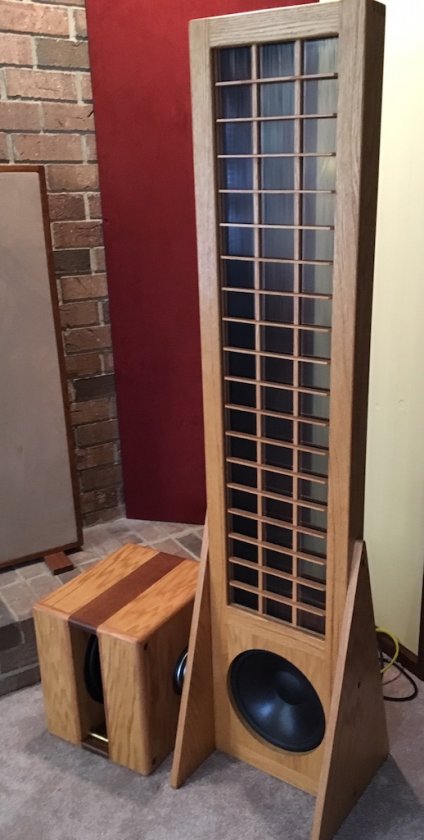For me; Ripole subs work exceptionally well with my dipole speakers.
My speakers are full-dipole hybrid ESLs, with triangular base legs forming a tapered H-baffle around the 12” woofer.
I had been using sealed box subs, but even with a DSP crossover and parametric EQ's, I could never get a seamless blend or the tight, clean, non-booming bass I wanted. Adding corner bass traps to my room only helped a little.
A few years ago I replaced the sealed box subs with a pair of 2 x 12” Ripole subs and magic happened!
The booming and muddiness was GONE-- leaving only clean, tight bass rising up from nowhere and receding back to nowhere-- quite amazing, really.
The Ripole radiation pattern is not a symmetrical figure-8, as in a true dipole, but an asymmetrical cardioid with the front lobe being more pronounced. Yet, they have a similar off-axis null. And whereas a dipole baffle does not change the woofer’s FS, and a sealed or ported box raises its FS significantly, a Ripole lowers the woofer’s FS by about 10Hz! And the more compact you make it, the lower the FS!
With the sealed box subs; I experienced the sound as a first arrival followed by successive arrivals reflected from the room boundaries—all combining to render the sound loose, ill-defined and slow to decay. And their omnidirectional propagation excited my room's resonance; resulting in booming one-note bass.
Ripoles significantly reduce the aforementioned nasty effects, I believe, because their off-axis null doesn’t excite the room resonance, and I'm hearing predominantly the front lobe sound, as the off-axis response is nulled and the opposite-phase rear lobe gets mostly cancelled.
The downside is the low efficiency (I consider a pair of 2x12’s more necessity than optional). Their impact is a bit softer but the decay very fast, which I believe explains the tight, clean and unobtrusive quality that’s great for music but not so much for home theater special effects.
For me; the Ripoles were ideal for my setup. Call me biased and I won’t disagree, but I'm not going back to conventional subs.
